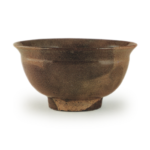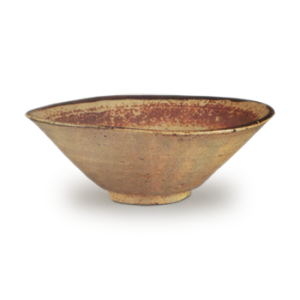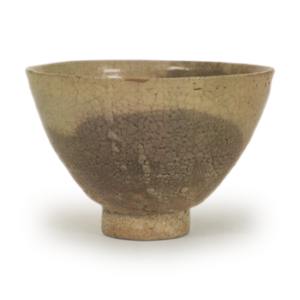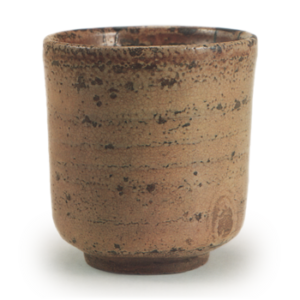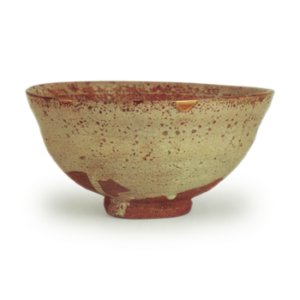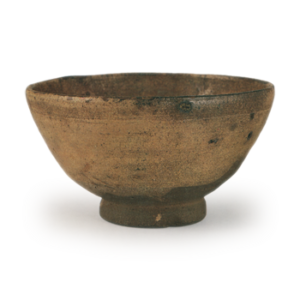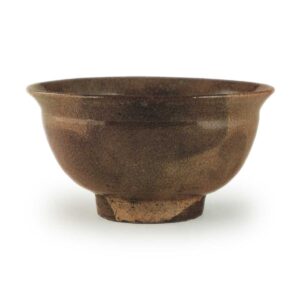
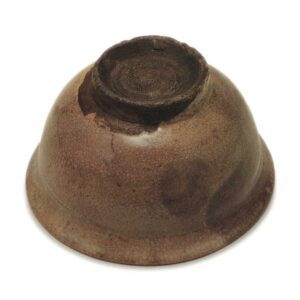
Height: 7.2cm
Diameter: 13.5-13.7cm
Outer diameter of foot: 5.9-6.0cm
Height: 1.1cm
Of the Onikuma ware that we have examined, this tea bowl has a gentle appearance in both shape and glaze, and we think it may be the most elegant of all.
The commentary on Onikuma ware in the Taisho Meiki Kan (A Guide to Famous Tea Bowl of the Taisho Period) says that “reddish purple clay is rare”, but the clay of this tea bowl is indeed reddish purple, and the clay itself is soft and sticky. The rather large foot is almost entirely straight, and the inside of the foot is also deeply carved. The center of the foot is not left with a helmet-shaped rim, but is carved out in a large spiral pattern, and the clay surface is wrinkled. From the smoothly curved foot ring, the potter’s wheel extends to the body, and then tapers off and tightens at the rim, which is the usual shape for Kumagawa ware. The shape of the vessel is smooth and flawless from the foot to the rim, and the slow, even action of the potter’s wheel is evident in the truly well-balanced shape, which is outstanding in its natural unity. The interior is quite spacious, and a small, deep mirror is clearly visible in the central tea-drip well, but there are very few pieces from the Onikuma River that have a mirror this small. As well as the well-balanced shape, the yellowish-brown glaze that covers the whole piece is also excellent. The glaze is quite thick overall, and it has melted very well. The crazing that appears all over the surface is generally quite rough, and the fact that it is of a similar size from the rim to the base of the body is probably because the thickness of the glaze is almost the same from the rim to the base. The glaze is not particularly showy, but rather has a subdued appearance, but the way that the purple-tinged stains appear in large and small, thick and thin, like a patchy cloud, is very tasteful. There is a spot of nakago glaze on the outside of the rim and another on the inside, and it is probably because of this that the name “Tsukikage” (moonlight) was given to this piece. The glaze that hangs down from part of the foot ring is slightly whitish, like Kiseido glaze.
There are not many small, tightly-wrought, deep-flavored tea bowls in Kumagawa, and in particular, there seem to be many Onikumagawa bowls, but the ones that have come to my attention are only five or six, and when it comes to high-quality pieces, they are extremely rare. The Taisho Meiki Kan (A Guide to Famous Tea Bowls of the Taisho Period) only mentions two bowls: the Kaga Murasaki and the Natsuyama, which were passed down in the Hosokawa family.
The black lacquered box is called “tsumabana” and the rim is lacquered in vermillion. The two characters “Tsukikage” are in gold powder lettering and the author is unknown. It is also unclear when it was passed down from generation to generation, but according to what I have heard, it was passed down to the Kamimatsu family, a famous family in Gifu, and later became the treasured property of the tea master Morikawa Yoshiharu of Nagoya.

